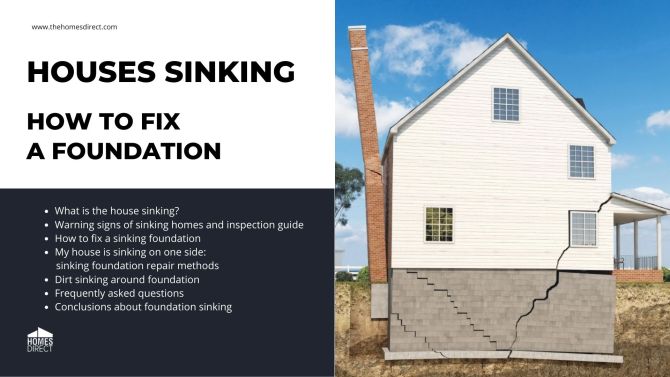
Table of Contents
- What is the house sinking?
- Warning signs of sinking homes and inspection guide
- How to fix a sinking foundation
- My house is sinking on one side: sinking foundation repair methods
- Dirt sinking around the foundation
- Frequently asked questions
- Conclusions about foundation sinking
Your home is one of your most significant investments, so you want to ensure it remains sturdy and secure for many years to come. Unfortunately, a foundation sinking can cause significant damage to your home, making it unsafe to live in and costly to repair.
In this article, we'll take a look at the causes of house sinking, the warning signs to look out for, and the methods for fixing a sinking foundation.
What is the house sinking?
If you're not familiar with the term, house or foundation sinking occurs when the soil underneath your home settles or shifts, causing your foundation to sink and become unstable. This can lead to cracks in walls, uneven floors, and doors that won't close properly. If left untreated, it can also cause damage to plumbing, electrical wiring, and other parts of your home.
In fact, there are several reasons why a house is sinking. One of the main reasons is that the soil beneath the foundation is changing over time. For instance, if the soil becomes compacted or saturated with water, the house can lose its stability. As a result, the foundation will begin to sink.
Another reason for sinking foundations is their poor construction. If you build your home on an unstable foundation, it will start sinking sooner or later. The signs of poor construction are low-quality building materials, not compacting the soil properly, or not having a proper drainage system.
The good news is that you can prevent further damage to your home by recognizing the warning signs of a sinking foundation and taking action as soon as possible.
Warning signs of sinking homes and inspection guide
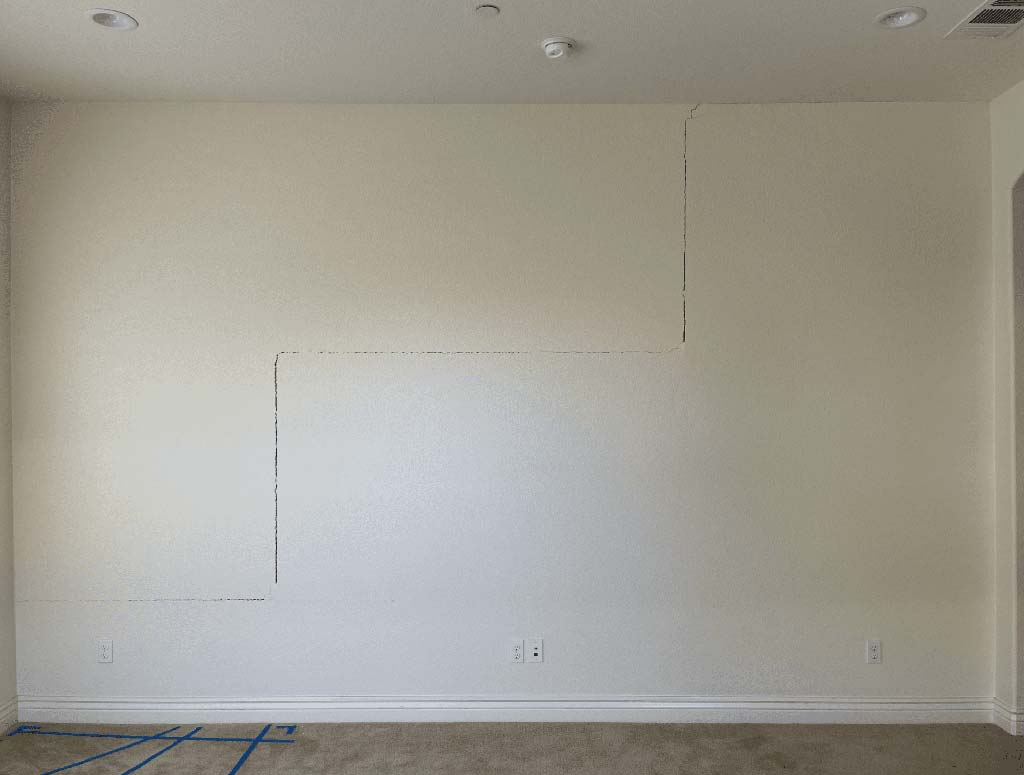
The first step in preventing foundation sinking is to recognize the warning signs. If you notice any of the following signs, it's important to have your foundation inspected by a professional:
1. Cracks in walls, floors, or ceilings
One of the most common signs of a sinking foundation is cracks in the walls of the home. These cracks can appear in the walls or the ceiling, and they can be caused by the shifting of the foundation. This can be a cause for concern, as the foundation is the backbone of your home and any damage to it can lead to structural problems in the future.
2. Uneven floors or sagging floorboards
An uneven floor is another sign you should consider. If you notice that the floor in your house is a little sloppy or uneven, it should never be ignored. Remember that uneven floors can increase the risk of falls and trips. So, call a professional to inspect the house once you notice an uneven floor or sagging floorboards.
3. Doors and windows that won't close properly
The sinking of the foundation affects the doors and the windows. Even a slight change in the foundation makes it difficult to close or open them properly. In other words, they don't fit the frames they have. This can also lead to air leaks and increased energy costs.
4. Gaps between walls and the ceiling or floor
Gaps around doors or windows can also be an indication of a sinking foundation. If you notice that there are gaps between the frames of the doors or windows and the walls, it could be a sign that the foundation is sinking. These gaps can also let in drafts and pests, creating further problems for your home.
5. Mold or moisture in the basement
Mold and moisture can also be indicators of a sinking foundation. If you notice a musty smell or signs of mold growth, such as discoloration or a fuzzy texture, it's important to address the issue as soon as possible. Mold can cause health problems for you and your family, and can also lead to further damage to your home.
Moisture issues can also be a sign of a sinking foundation. If you notice water stains on the walls or ceiling, or if you experience frequent water leaks or flooding in your basement, it could be a sign that the foundation is sinking and causing drainage problems.
If you notice any of these warning signs, it's important to call in a professional to inspect the home. They will be able to assess the situation and recommend the best course of action. This may involve repairing the foundation or taking steps to prevent further sinking, such as improving drainage or adding support piers.
Ignoring the warning signs of a sinking foundation can lead to further damage to your home and increased repair costs in the future. By taking action as soon as you notice any signs of sinking, you can protect your home and keep it safe and secure for years to come.
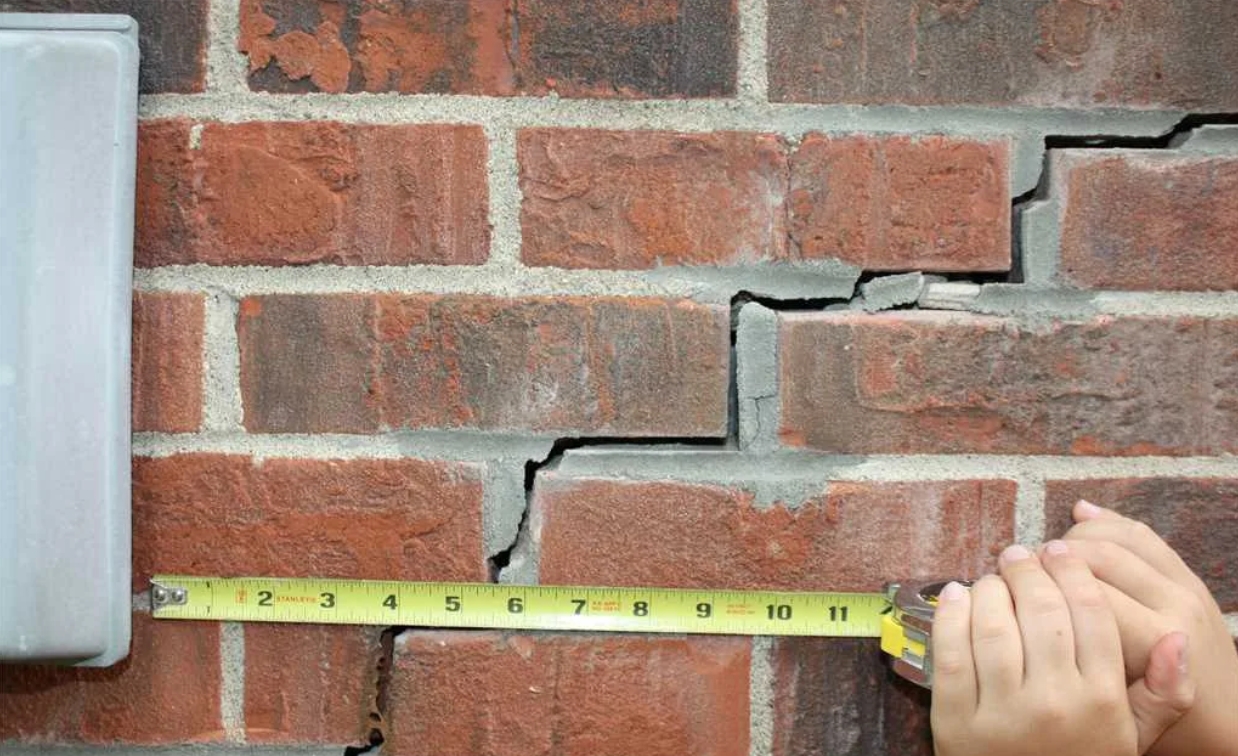
How to fix a sinking foundation?
Once you find out your home is sinking, it's time to identify the method you want to use to repair it. There are many methods for fixing a sinking foundation. The professional will choose the method based on the type of sinking and the type of foundation your home has.
Here are some of the most common methods for fixing a sinking foundation:
-
Helical Piers: This involves installing steel piers beneath the foundation to provide additional support and prevent further sinking. This method is suitable for homes with deeper foundations or more severe sinking.
-
Mudjacking: This involves pumping a mixture of water, cement, and sand under the foundation to lift it back into place. This method is suitable for small and medium-sized jobs and can be less expensive than other methods.
-
Foundation Repair Braces: This involves installing steel beams against the foundation walls to provide additional support and prevent further sinking. This method is suitable for homes with bowing walls or other structural issues.
My house is sinking on one side: sinking foundation repair methods
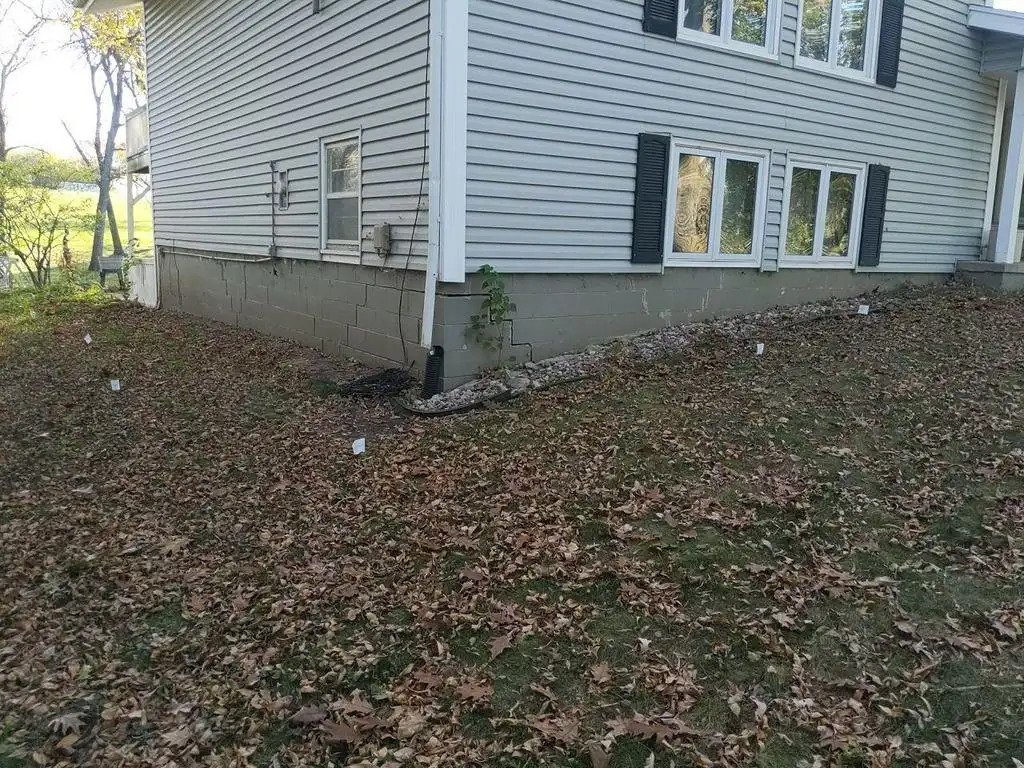
If your house is sinking on one side, it could be a sign of a more serious problem. There are several possible causes of a sinking foundation on one side, including soil erosion, poor drainage, and tree roots.
Below you can find some house-sinking foundation repair methods on one side:
Install drainage: One of the most common reasons for a sinking foundation in one corner is poor drainage. When water accumulates around the foundation, it can cause the soil to become saturated and compress, leading to foundation settlement.
To address this problem, installing a drainage system can help to redirect water away from the foundation. This can include installing gutters, downspouts, and French drains to ensure that water is properly channeled away from the foundation.
Remove tree roots: Another potential cause of a sinking foundation in one corner is tree roots. Trees planted too close to the foundation can cause soil to shift and compact, leading to foundation settlement. If this is the case, removing the tree may be necessary. If the tree cannot be removed, cutting the roots that are causing the problem can help to prevent further damage to the foundation.
Carry out underpinning: If the sinking occurred because of soil erosion or instability, underpinning may be the best option for fixing a sinking foundation in one corner. Underpinning involves installing piers beneath the foundation to provide additional support and lift the foundation back to its original position.
This can be done using various methods, such as helical piers, push piers, or resistance piers, depending on the specific needs of your home.
In addition to the methods mentioned above, there are other potential solutions for fixing a sinking foundation on one side, such as mud jacking. This method involves injecting a stabilizing material, such as a mixture of cement and water, beneath the foundation to raise it back to its original position.
Dirt sinking around the foundation
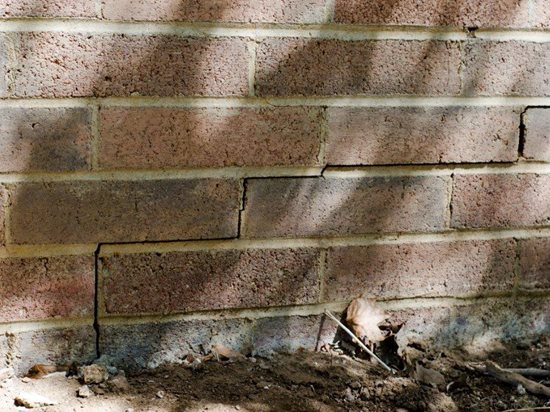
If you notice that the dirt around your foundation is sinking, it's a sign that the soil underneath is not stable. Just like we've mentioned above, it can be caused by many factors, including poor soil conditions, poor drainage, or water damage.
One of the methods of foundation fixing is installing a drainage system and diverting water away from the foundation.
Another method of sinking foundation repair is to add soil around the foundation. This can help to provide additional support and repair the sinking foundation. In this case, you will need to make sure that the soil is compacted and graded correctly to avoid any further issues.
Frequently asked questions
-
How serious is a sinking foundation?
A sinking foundation is a serious issue that requires prompt attention. If left unchecked, it can lead to severe damage to the structure of the house, which can be expensive to repair. The longer you wait to address the problem, the worse it will get.
-
What are the first signs of foundation problems?
As mentioned above, the first signs of foundation problems include uneven floors, cracks in the walls, gaps around doors, mold, and moisture, which can lead to health problems for you and your family members.
-
What happens if your foundation is sinking?
If your foundation is sinking, it can cause severe damage to the structure of your home. Starting from cracks on the walls or ceilings to the collapse of your house if left unrepaired.
-
Can a house collapse from foundation issues?
Yes, a house can collapse from foundation issues. If the foundation is severely damaged and left unchecked, it can lead to the collapse of the entire house. The longer you wait to address the problem, the worse it will get, and the more expensive it will be to fix. It's better to be safe than sorry when it comes to your home's foundation.
Conclusions about foundation sinking
Foundation sinking is a serious issue that can cause significant damage to your home. To prevent further damage and keep your home safe and secure, it's important to recognize the warning signs and take action as soon as possible.
There are several methods for fixing a sinking foundation, including mud jacking, helical piers, and foundation repair braces. The method that's right for your home will depend on the cause of the sinking and the type of foundation you have.


